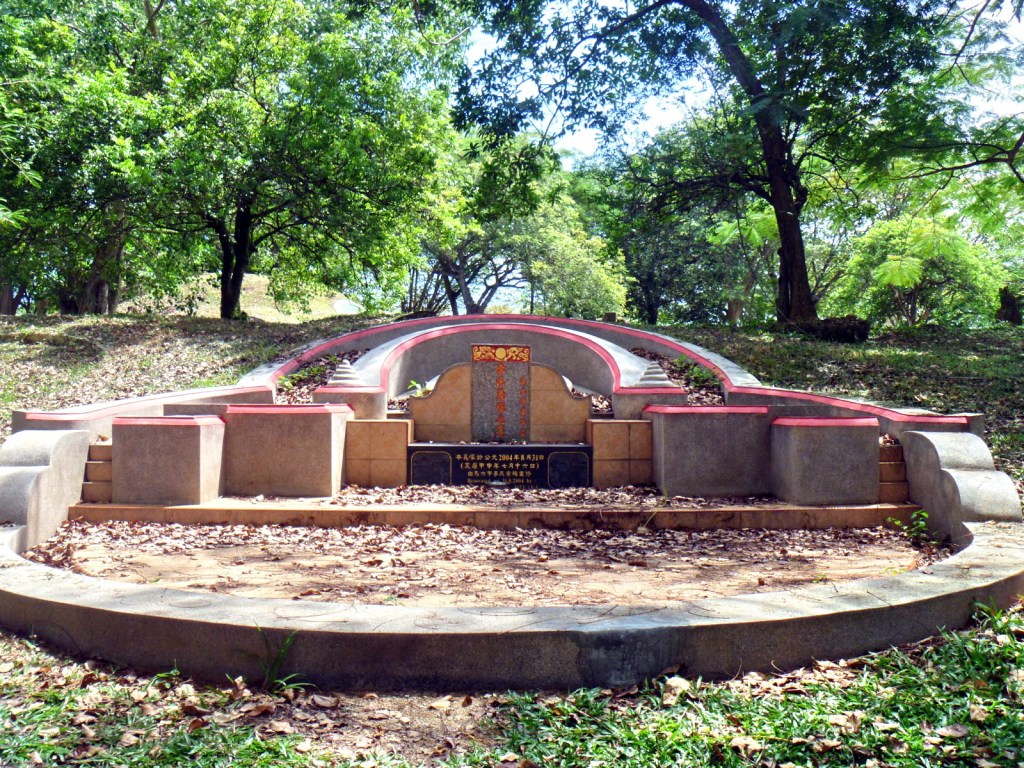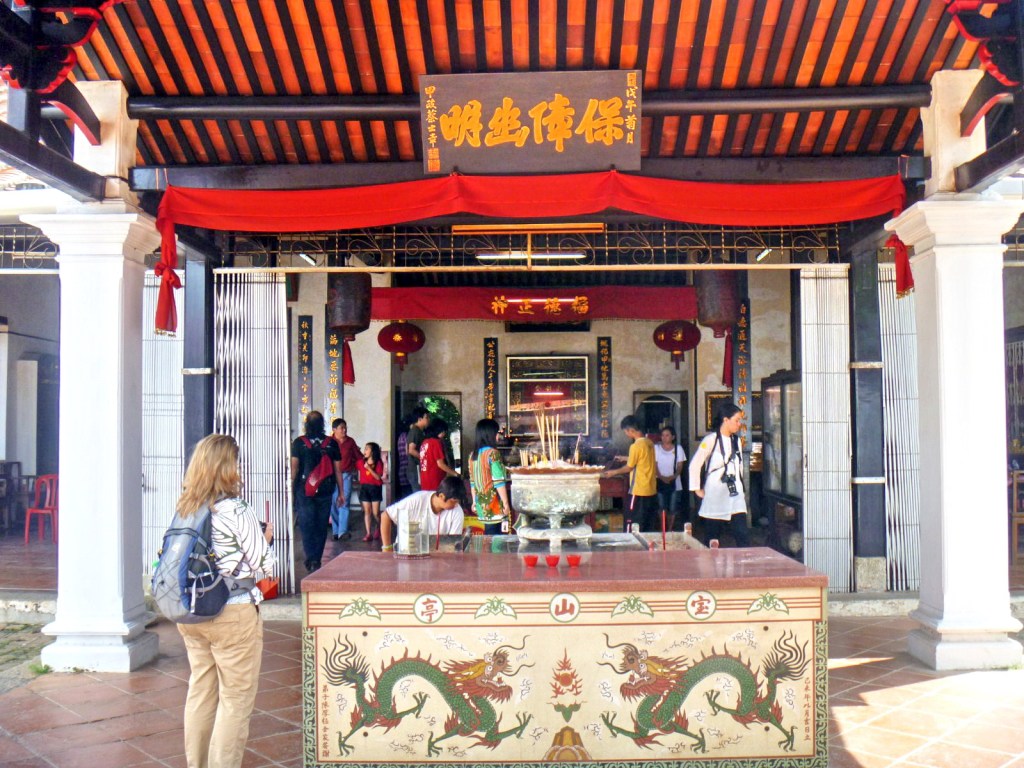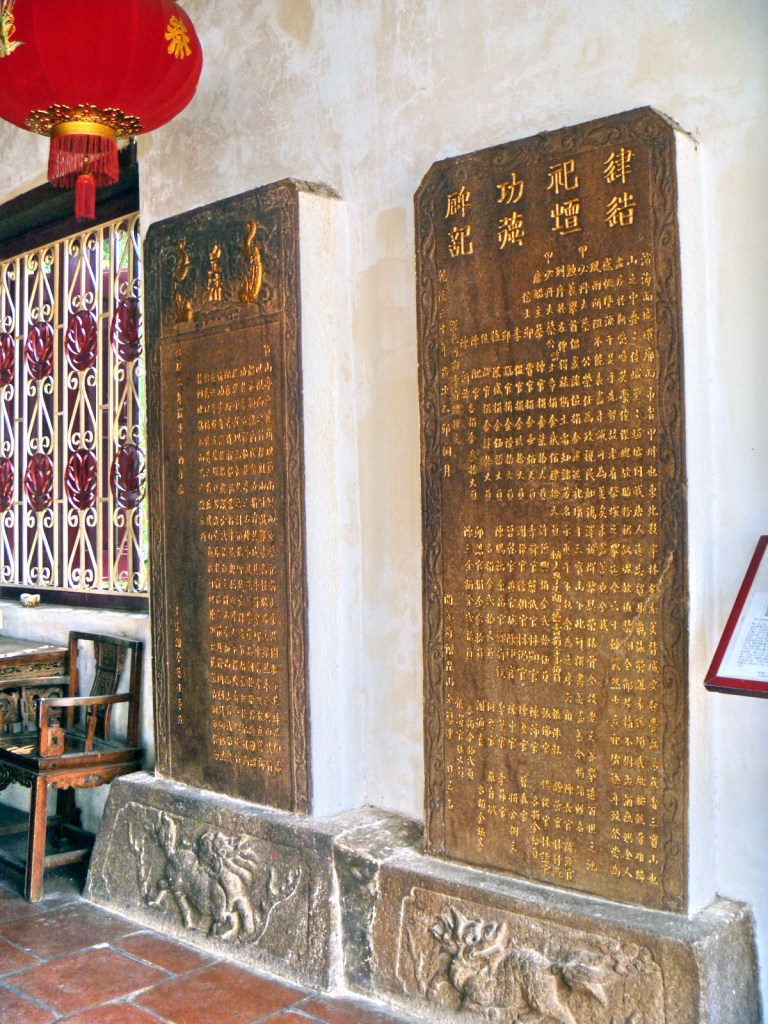From St. Peter’s Church, our tourist bus proceeded next to Bukit China (“Chinese Hill”). Bukit China is believed to be the largest Chinese cemetery outside China, filled with 5,000 to 12,000 small and big graves with many tombs dating back to the Ming Dynasty.
During the peak of the Malacca Sultanate, the Chinese Emperor gifted Sultan Mansur Shah with a princess named Hang Li Poh, the great granddaughter of the Yongle Emperor, the third emperor of the Ming Dynasty. Her vast entourage of 500 sons of ministers and a few hundred handmaidens settled here.
At the southwestern foot of Bukit China is beautiful Poh San Teng Temple (translated as “Precious Hill”), built in 1795 by her ancestor Chua Su Cheong. The temple is dedicated to Tua Pek Kong (also called Fu De Zheng Shen), the guardian deity of the land and of the 12,500 graves on the nearby Bukit China. Because of its other name San Poh Kong Temple, it is often incorrectly assumed that the temple is associated with Admiral Cheng Ho (Zheng He), a Ming-dynasty navigator. In fact, there is no evidence of Cheng Ho’s involvement in the history of the temple.
An inscription on a stela commemorating the founding of the temple reads: “Bukit China is the place where early traders from China were buried. Many Chinese traders came to this country with high expectations of success. Sadly, some died before fulfilling their dreams. Without a family with them, there was no one to pray for their souls. As such, the Chinese Kapitans initiated prayers on their behalf. However, these were always hampered by strong winds and heavy rainfalls because there was no proper shelter. So in 1795, after Chua Su Cheong had been appointed the Chinese Kapitan, he looked into this problem faced by the community and initiated the building of a temple at the foot of Bukit China, to ensure that the prayers for those buried in Bukit China would not be interrupted.”
Hang Li Poh’s followers also built, adjacent to the temple’s entrance, a well in 1459 that is said to have never dried up, even during droughts. Called Perigi Rajah (“King’s Well”) or Hang Li Poh’s Well, it is believed to be the oldest existing well in Malaysia and was the main source of fresh water for the city from the 15th century onward. The well was later poisoned by the Sultan of Malacca causing the death of 200 Portuguese soldiers. This was repeated in 1606 by the Dutch and in 1628 by the Acheenese. Today, the well was turned into a wishing well and many believe those who toss coins into the well will return again to Melaka.




